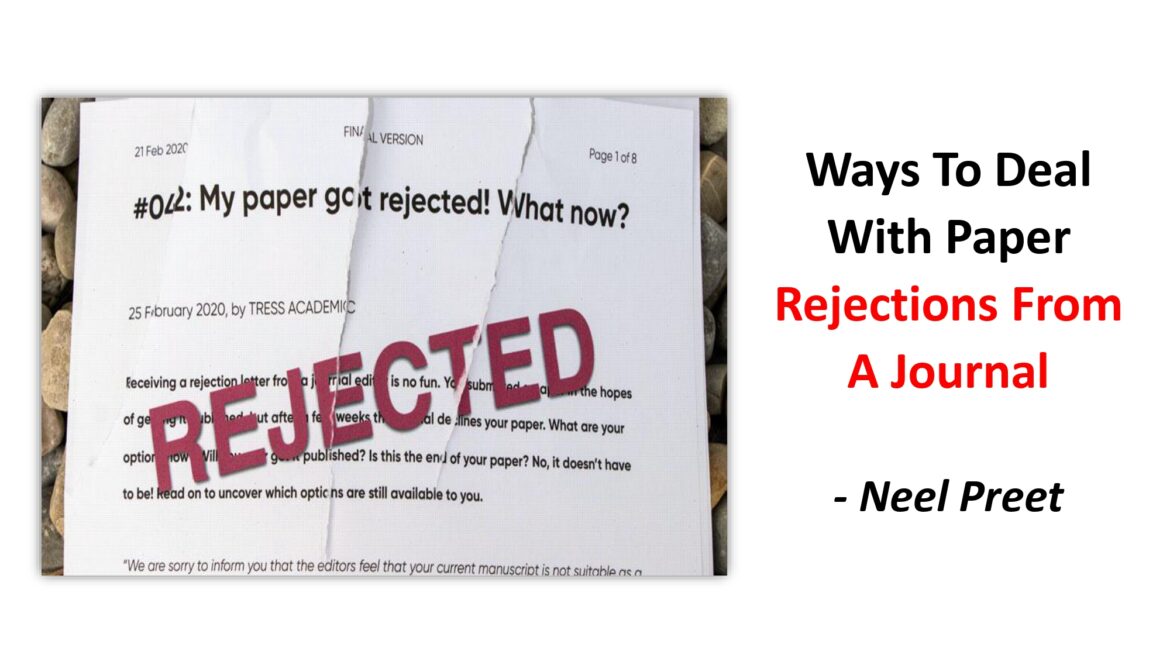There is an inevitable fact that even the best of the best research papers gets rejected at times. Many of you will be amazed to know that there are times in history when even the papers of the Noble Laureates has been rejected. So now, you can imagine that how tricky it is to get your research paper accepted to be published from a respectable journal. Well, in the case of the submission of the research papers, the chances of getting rejection from a journal is actually very high. Therefore, if you are a researcher who has submitted a research paper to a journal then you should not worry much about facing rejection; rather your prime focus should be upon the Options, which the Journal have for the Rejection!
Every authors has a number of options after a manuscript (research paper) is rejected by a journal. As noted above, some rejections occur before the paper is sent for review. In such cases, remember that your time is important. Find a new journal that fits your work and move on. If you have received reviews of your manuscript, that information is very valuable. Even if that particular journal will not publish the material, you now have ideas for ways to improve the paper.
Well, here are the most common options for next steps, that an author (researcher) should carry out after facing rejection from a journal –
Step 1) Appeal the Rejection: The journal should have a publicly described policy for appealing editorial decisions. Appealing a rejection is within your rights as an author, but base your appeal on logic and not emotion. If a legitimate misunderstanding or error led the reviewers to recommend rejection, outline your points to the editor without belittling the reviewers or being argumentative. Appeals based on the scope of the journal or the perceived impact of your work are unlikely to succeed.
Step 2) Resubmit to the Same Journal: The journal may reject your initial offering but invite you to resubmit later after addressing the reviewers’ concerns. If you are strongly interested in publishing in that journal, this option may be your top choice. Remember that some journals will inform you that they are not interested in accepting any future versions of the manuscript; you should respect this decision and try a different journal.
Step 3) Make Changes & Submit to a Different Journal: The third option is by far the most common. Carefully consider the comments you received from the reviewers, work to improve your manuscript, and submit the manuscript to another journal. Be sure to adjust details like the cover letter, reference format, and other journal specified details before resubmission.
Step 4) Make no changes & Submit to another Journal: While this option is very easy, it’s not a good idea. By refusing to acknowledge any of the changes that the first set of reviewers suggested, you are basically negating all the effort expended in that first round of review. Chances are that some of the suggestions would improve your manuscript, even if some were mistaken. New reviewers are likely to pick up on several of the same issues; you now have a chance to address them ahead of time. Moreover, on a more practical note, some of the same people at a new journal may actually review your manuscript. If you have not made any efforts to change the paper, be assured that their recommendation will not change!
Step 5) File the Manuscript away & Never Resubmit it: It can be easy to decide that your paper simply is not worth the trouble of resubmission. Still, while it is easy to let a paper go, considering that it is not the best for the research community. Your data might be very valuable to someone else, either to provide the missing piece to a puzzle or to head off fruitless avenues of research. As hard as it is to believe in these days of complete media saturation, scholarly publishing may yet suffer from publishing too little, not too much. If you do not want to argue for your article’s fit to a particular journal, consider PLOS ONE or PeerJ if you are in the biomedical sciences. Finally, you can post your work to a site like figshare or Dryad, where it will be citable and freely accessible.
Written By NEEL PREET – Author of the Books, Voice From The East (2016); Journey With Time Place And Circumstances (2018) & Indian Defence Files (2021).



